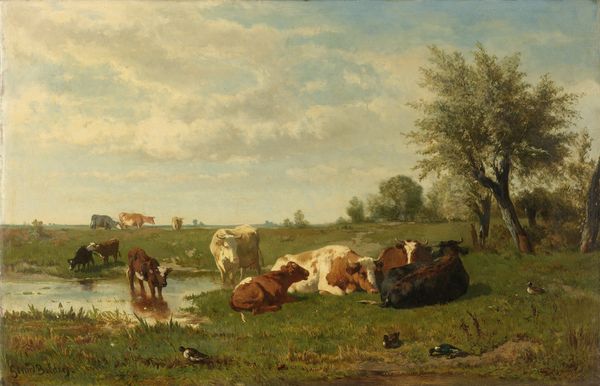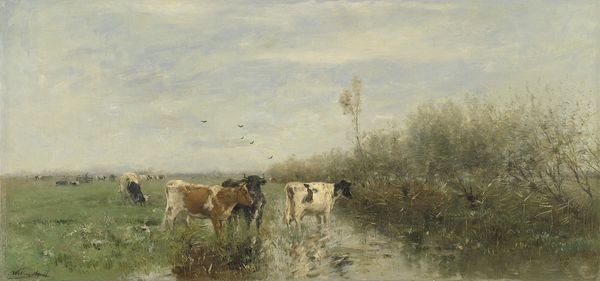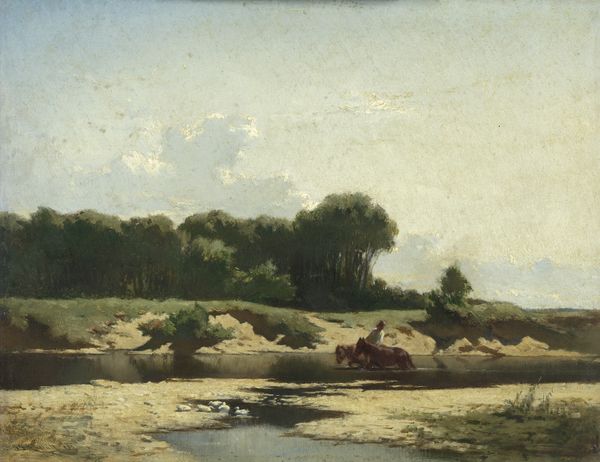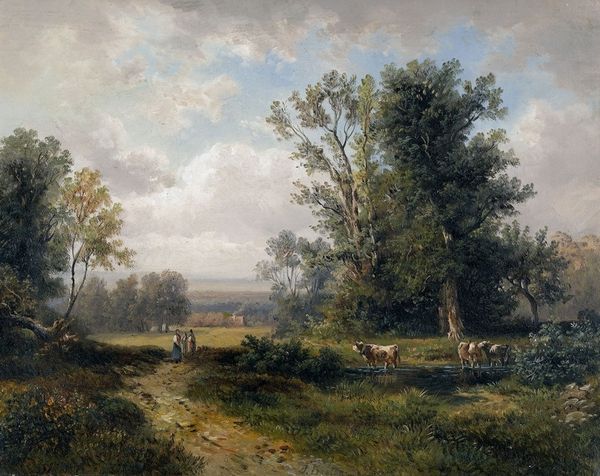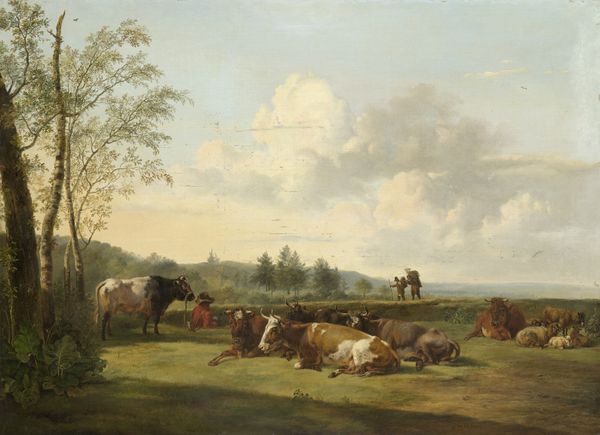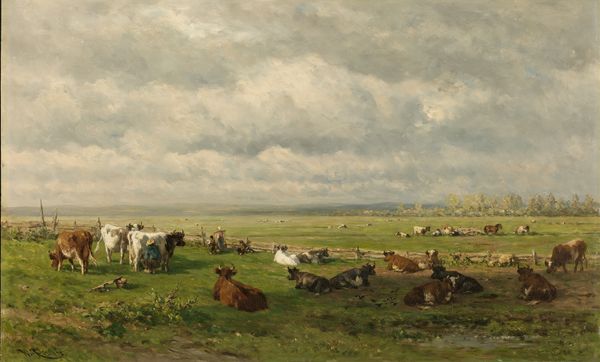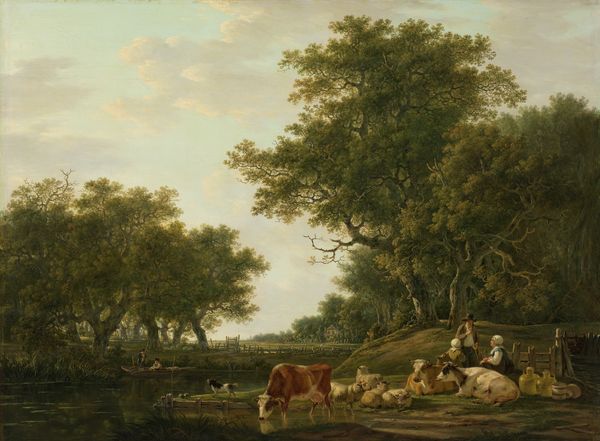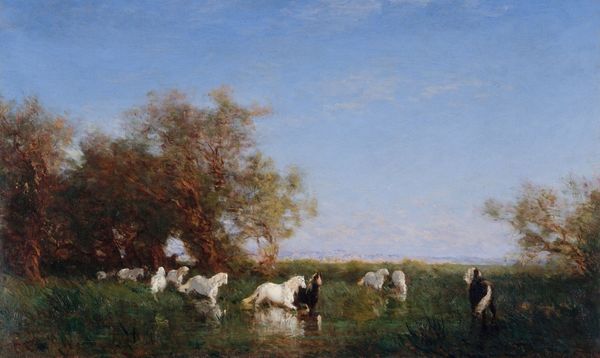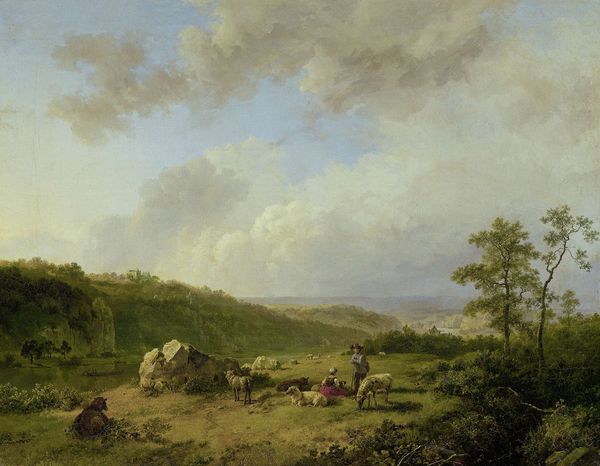
Dimensions: height 27.5 cm, width 45.3 cm, depth 7.2 cm, weight 6 kg
Copyright: Rijks Museum: Open Domain
Editor: We’re looking at Gerard Bilders’s "Cows at a Pond," an oil painting made sometime between 1856 and 1858. It’s very peaceful; I can almost feel the sun on my skin looking at it. What jumps out at you when you see this piece? Curator: It's interesting how Bilders captures this slice of rural life without idealizing it. Notice the earthy tones, the unglamorous depiction of the cows… almost like catching them unawares. There’s a realism that hints at the changing attitudes in art toward nature. The scene almost looks… mundane? Yet beautiful. How does the light strike you in this composition? Editor: It's soft, diffused. Not dramatic. It contributes to the sense of calm. Makes it feel like any ordinary afternoon. Was he part of a particular movement, trying to capture reality in this way? Curator: He was a precursor to the Hague School, a movement that sought to depict Dutch landscapes and everyday life with this kind of understated realism. Artists were moving away from grand historical paintings and toward scenes they witnessed daily, finding beauty in simplicity. I wonder, does that inform your appreciation of the painting? Editor: Definitely. Knowing that helps me see it as more than just "cows in a field." It’s a conscious choice to value the everyday. It makes the scene feel more genuine and relatable. It almost has a message, like slow down and enjoy the simple life. Curator: Exactly! And for me, this image almost perfectly summarizes his perspective on Dutch landscape paintings. I feel I understand what he was trying to do better now than at the start of our chat. Editor: I completely agree. It's all about the artist showing us the ordinary is worth noticing.
Comments
No comments
Be the first to comment and join the conversation on the ultimate creative platform.
